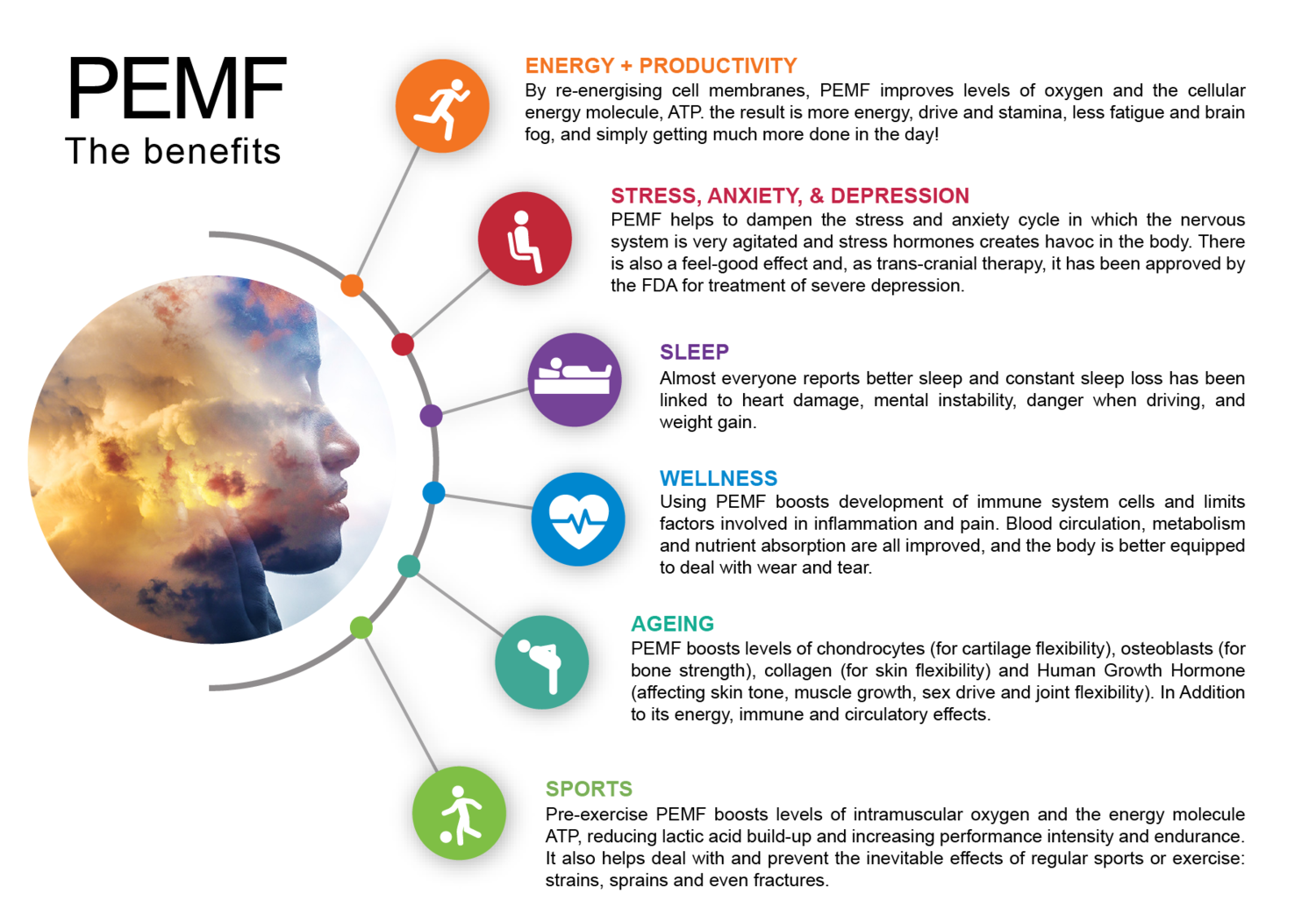PEMF Therapy
Perhaps the easiest way to understand PEMF is to think of each cell in your body as a little battery. Like with any battery, sometimes your cells become tired and worn due to age, stress, overuse, or damage, making it more difficult for them to fight off any type of potentially damaging force or illness. Pulsed Electromagnetic Field (PEMF) uses electromagnetic waves by passing pulses through your body and its cells. This process is quick and painless, but it affects changes in cellular energy levels for up to four whole days. By essentially recharging your worn-out, aging, or otherwise dysfunctional cells, PEMF improves your cellular metabolism, and thus your cells’ ability to function better, especially in times of illness. This has been found to help people in physical and mental wellness.
Through PEMF therapy, your batteries (i.e. your cells) essentially become recharged. The energy supplied via PEMF gives cells the energy they need to ward off whatever is threatening them, whether it is trauma or a disease-based attack. This makes it easier for your body to restore its health naturally, simply by using the electrical currents and impulses that are already interacting within and throughout your cells. In essence, high-powered PEMF is like a “battery re-charger” for your depleted cells.
How PEMF Therapy Works
1. Cellular Interaction:
At the core of PEMF therapy is its ability to interact with the body’s cells. The human body consists of trillions of cells, each with its own electromagnetic charge. External factors, such as injury, stress, or disease, can disrupt the balance of these charges. PEMF devices deliver controlled electromagnetic pulses that penetrate tissues and cells.
2. Stimulation of Energy Production:
The electromagnetic pulses emitted during PEMF therapy induce a mild electrical current within the cells. This stimulates the production of adenosine triphosphate (ATP), the primary energy currency of cells. Increased ATP production enhances cellular function, supporting various physiological processes.
3. Enhanced Circulation:
PEMF therapy has a vasodilatory effect, meaning it dilates blood vessels. This results in improved blood circulation, allowing for better oxygenation and nutrient delivery to cells. Enhanced circulation is vital for cellular health, tissue repair, and overall well-being.
4. Cellular Repair and Regeneration:
The increased energy and improved circulation contribute to the body’s ability to repair and regenerate cells. This is particularly beneficial for tissues undergoing healing, such as after an injury or surgery. PEMF therapy accelerates the natural healing process by supporting cellular repair mechanisms.
5. Influence on Cellular Signaling:
Electromagnetic fields from PEMF devices can modulate cellular signaling pathways. This influences the activity of various enzymes and proteins involved in cellular communication. By promoting balanced cellular signaling, PEMF therapy may contribute to the regulation of inflammatory responses and other vital functions.
6. Neuromodulation and Nerve Function:
PEMF therapy has been shown to influence the nervous system by modulating nerve activity. This can have implications for pain management and neurological disorders. The electromagnetic pulses may affect the transmission of nerve signals, leading to reduced pain perception and improved nerve function.
7. Frequency and Resonance:
Different PEMF devices operate at specific frequencies, and the choice of frequency can influence the therapeutic outcome. The concept of resonance is crucial in PEMF therapy, where the electromagnetic frequency matches the natural frequency of specific biological processes, optimizing their function.



